In the vast grasslands and arid regions of East Africa, a regal and captivating bird roams the landscape, catching the eye with its striking appearance and unique demeanor. Introducing the Vulturine Guineafowl (Acryllium vulturinum), a remarkable species that embodies grace, beauty, and a touch of the exotic. Join us as we delve into the fascinating world of the Vulturine Guineafowl, exploring its distinctive characteristics and unravelling the secrets of its existence in the African savannah.
Vulturine Guineafowl images
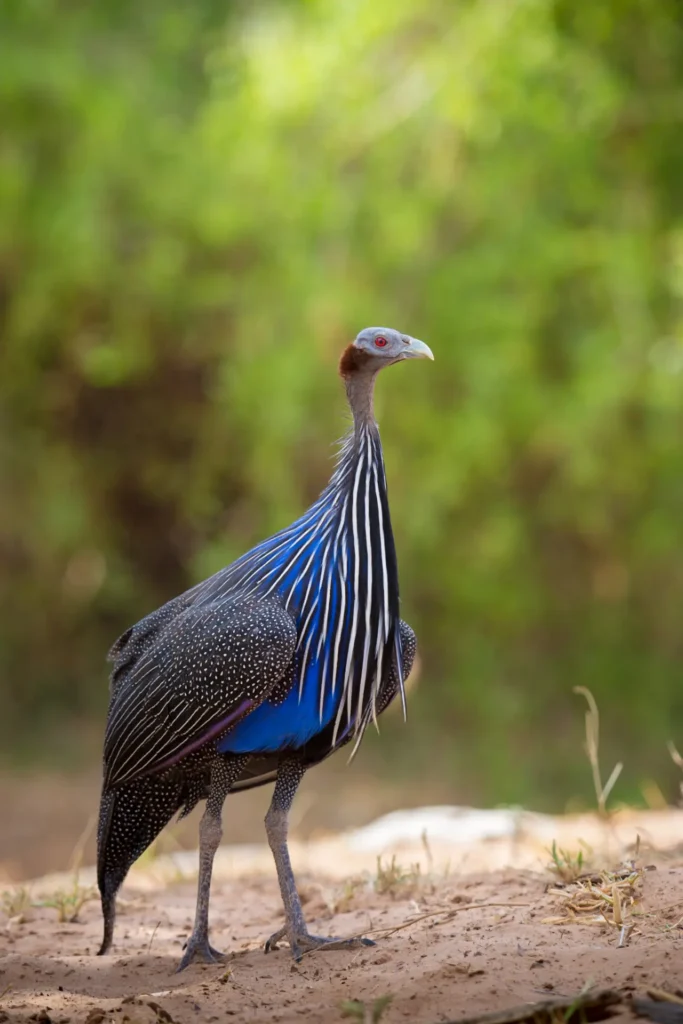
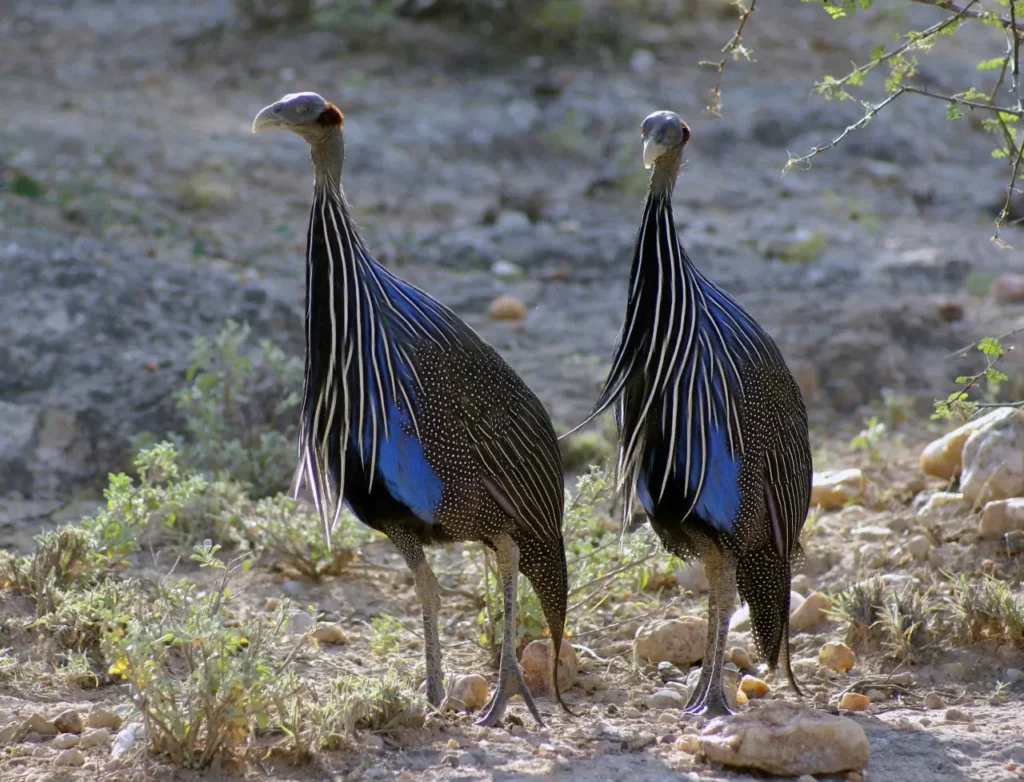
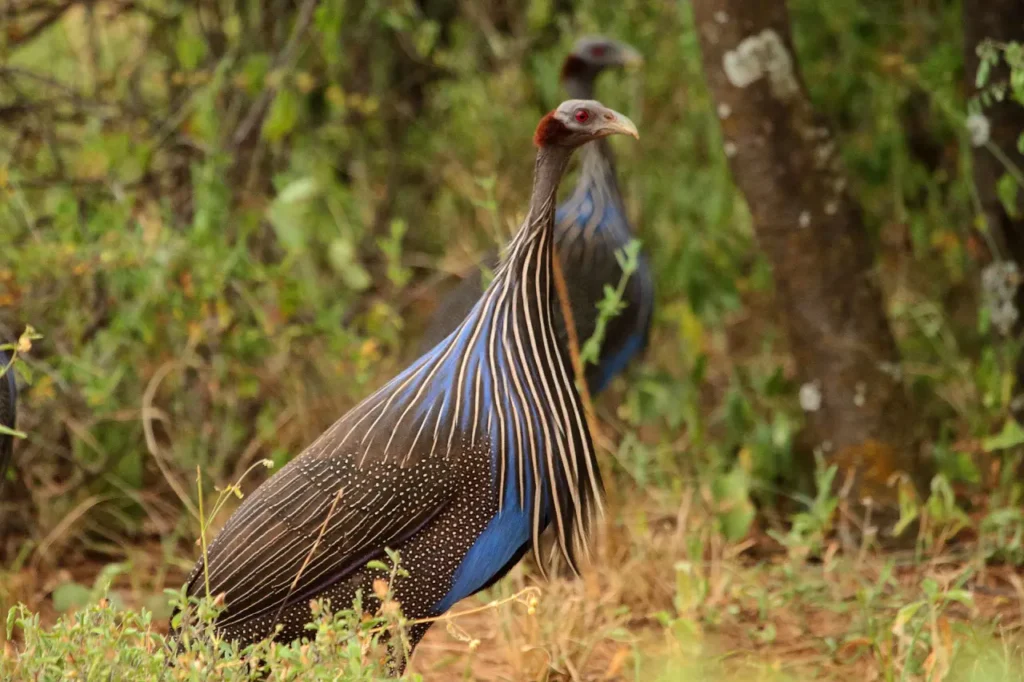
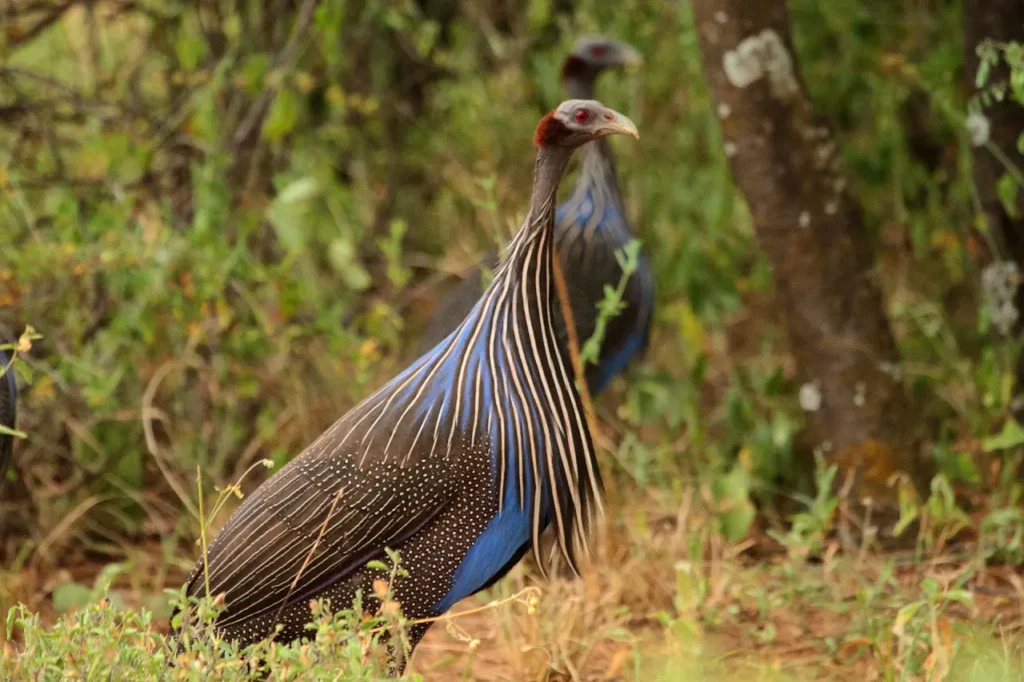
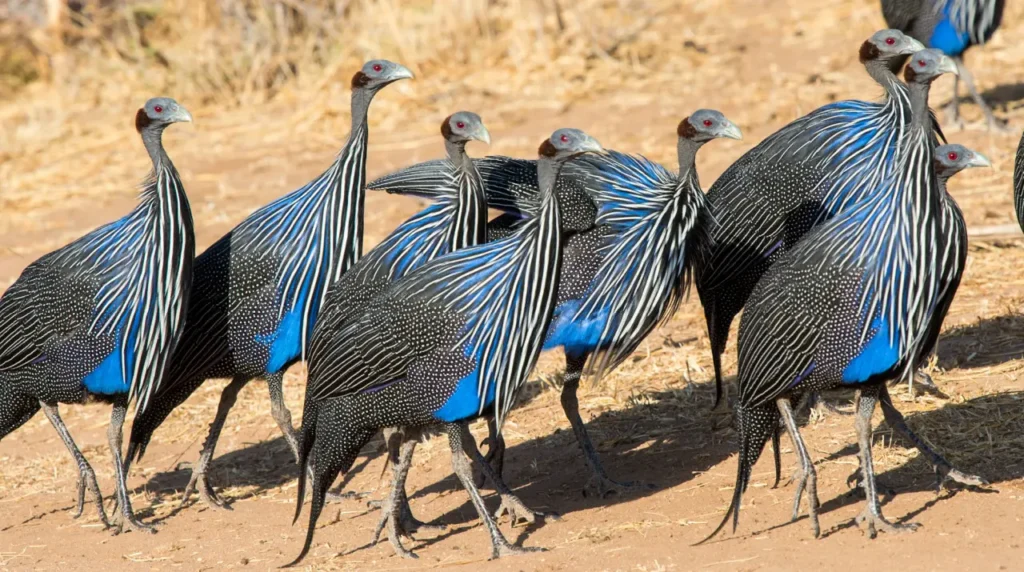
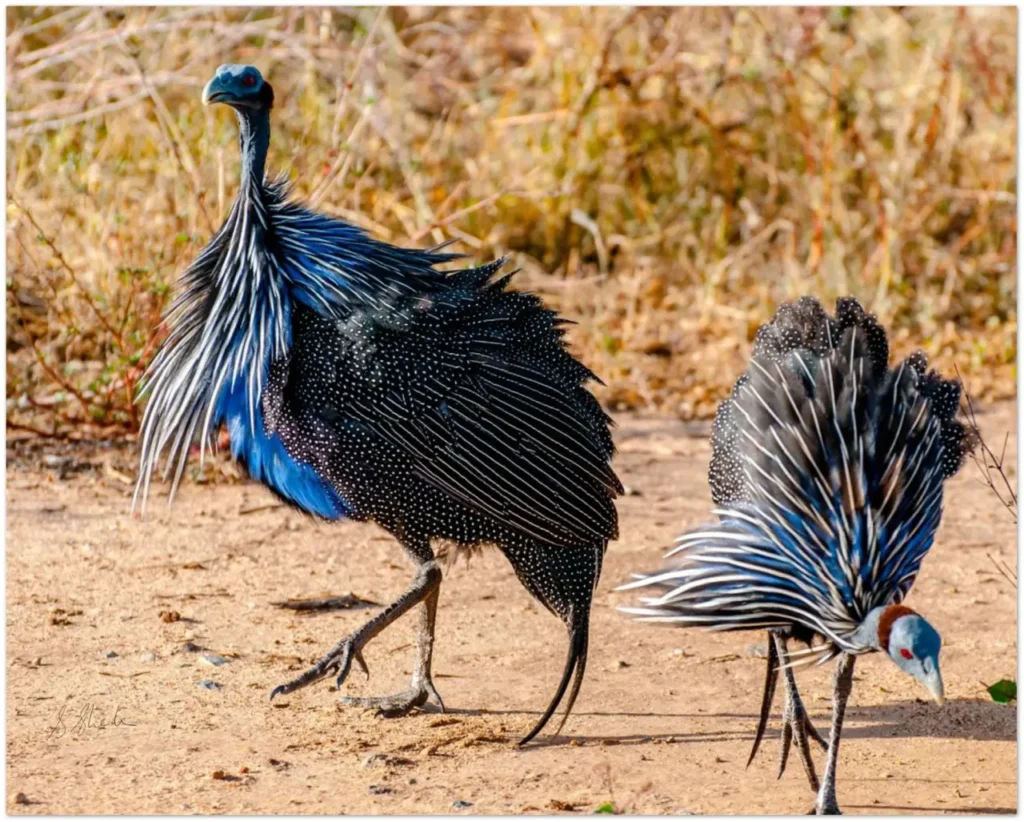
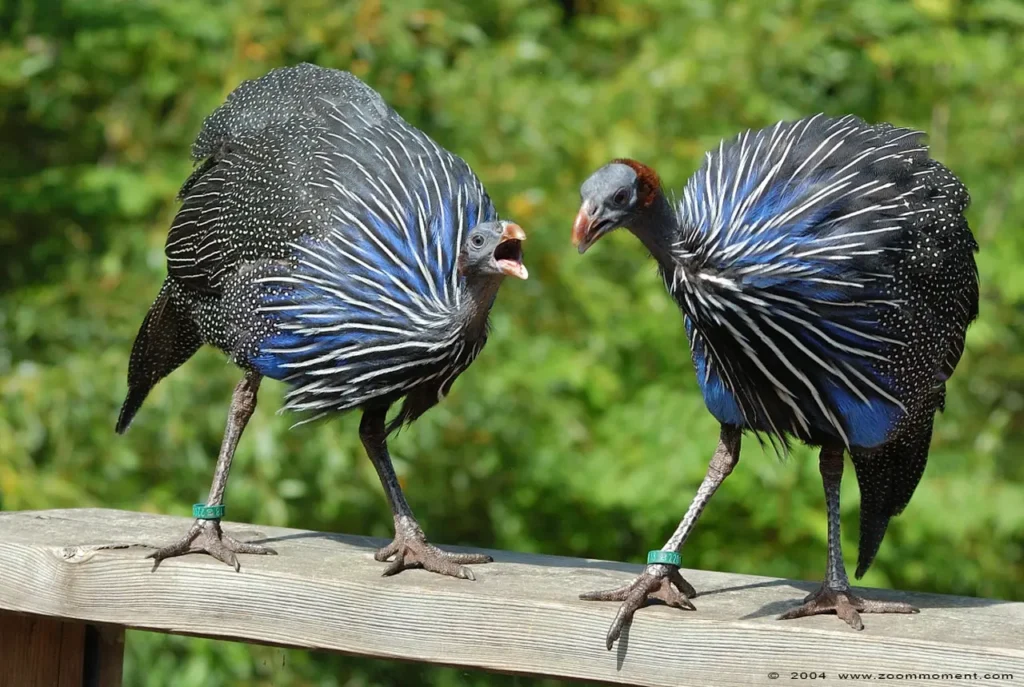
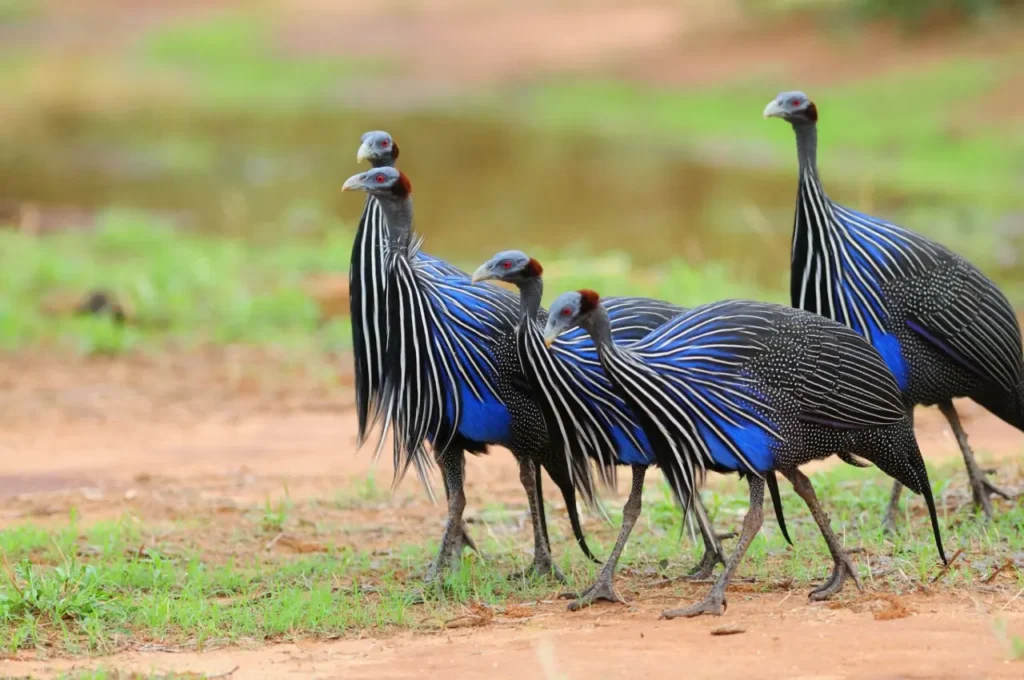
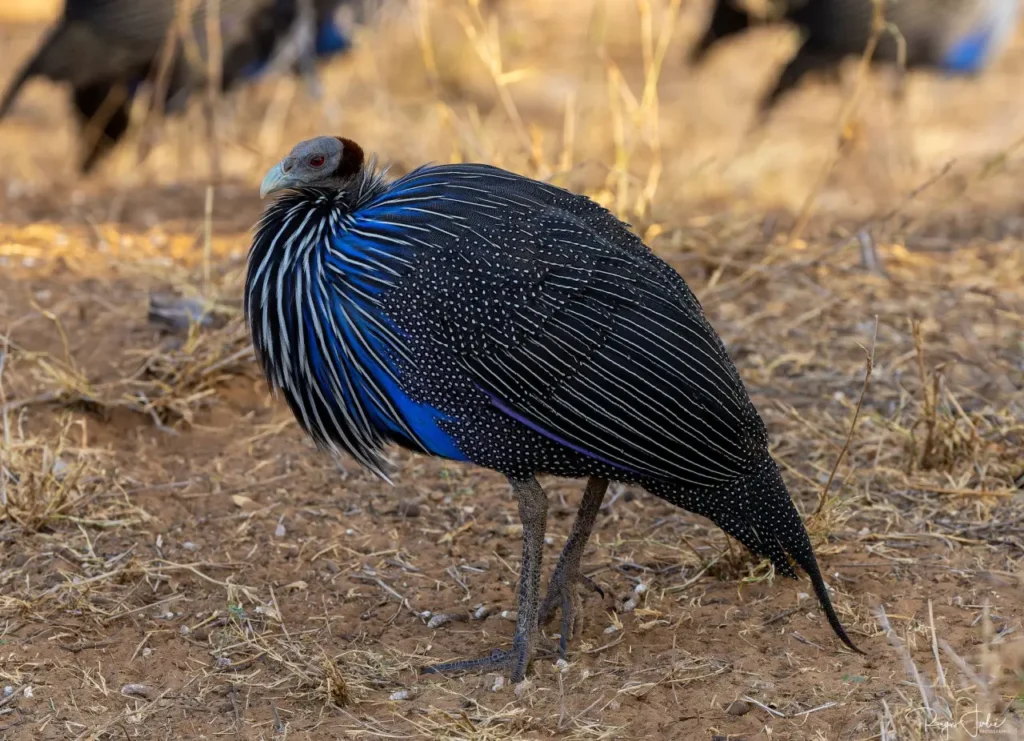
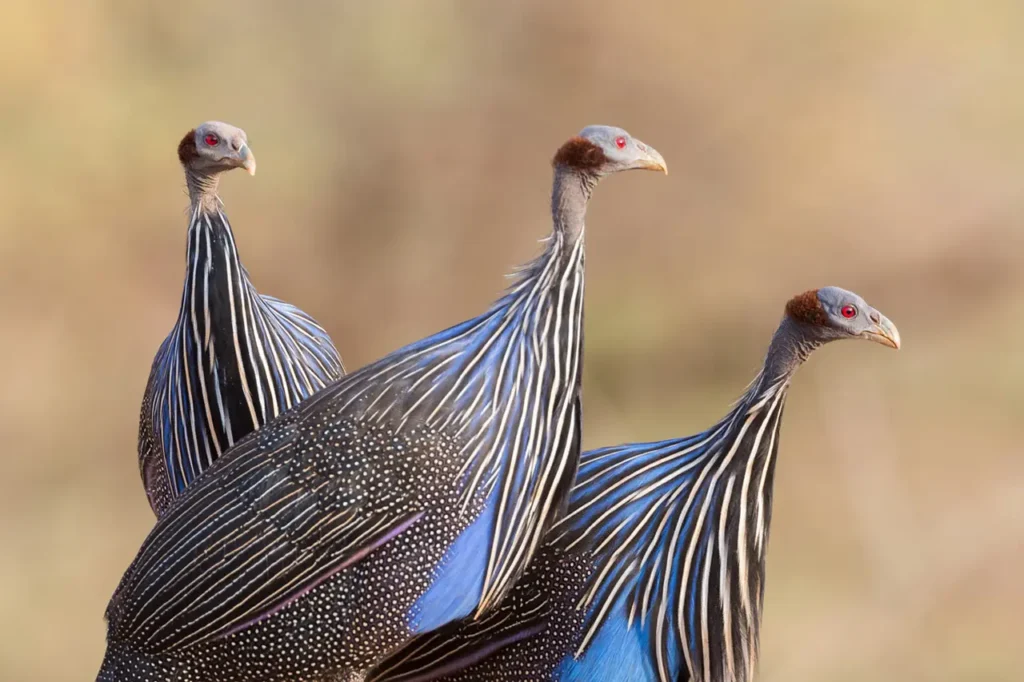
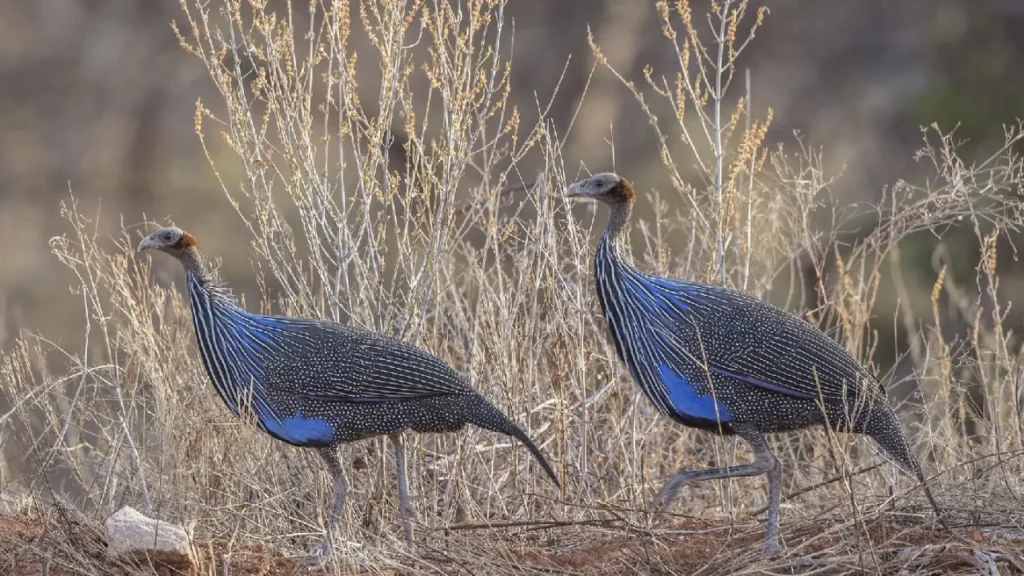
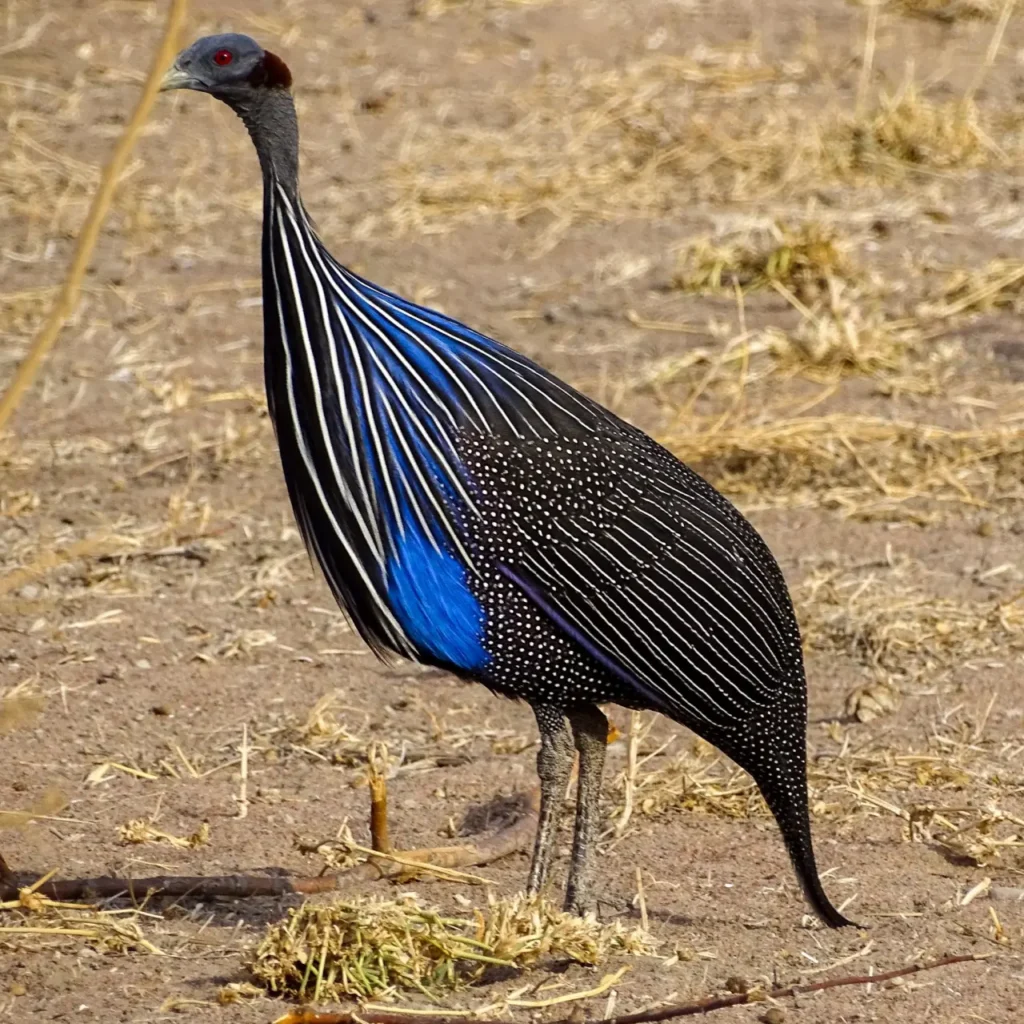
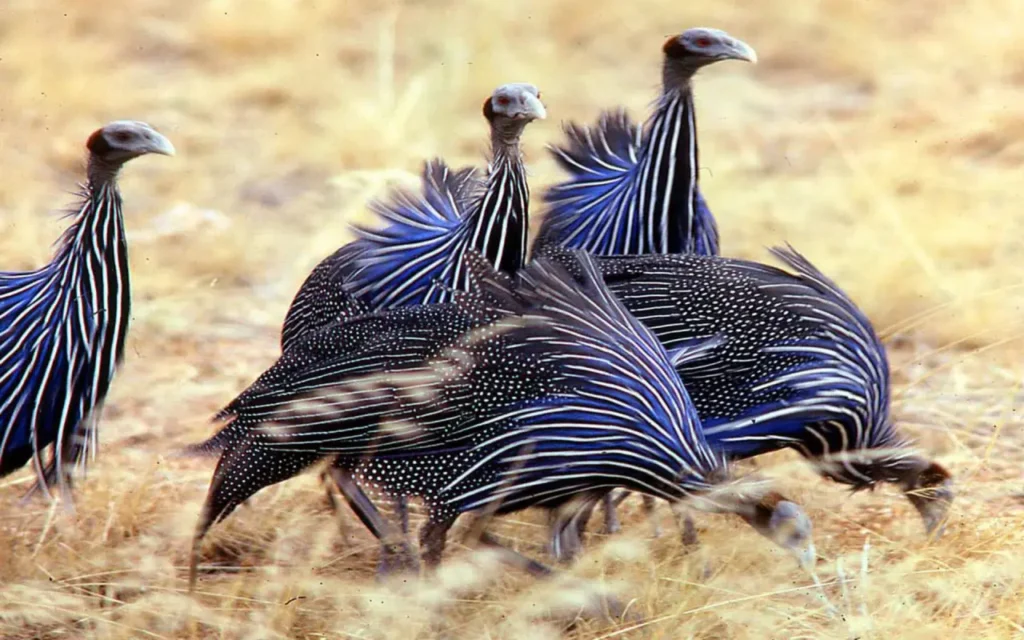
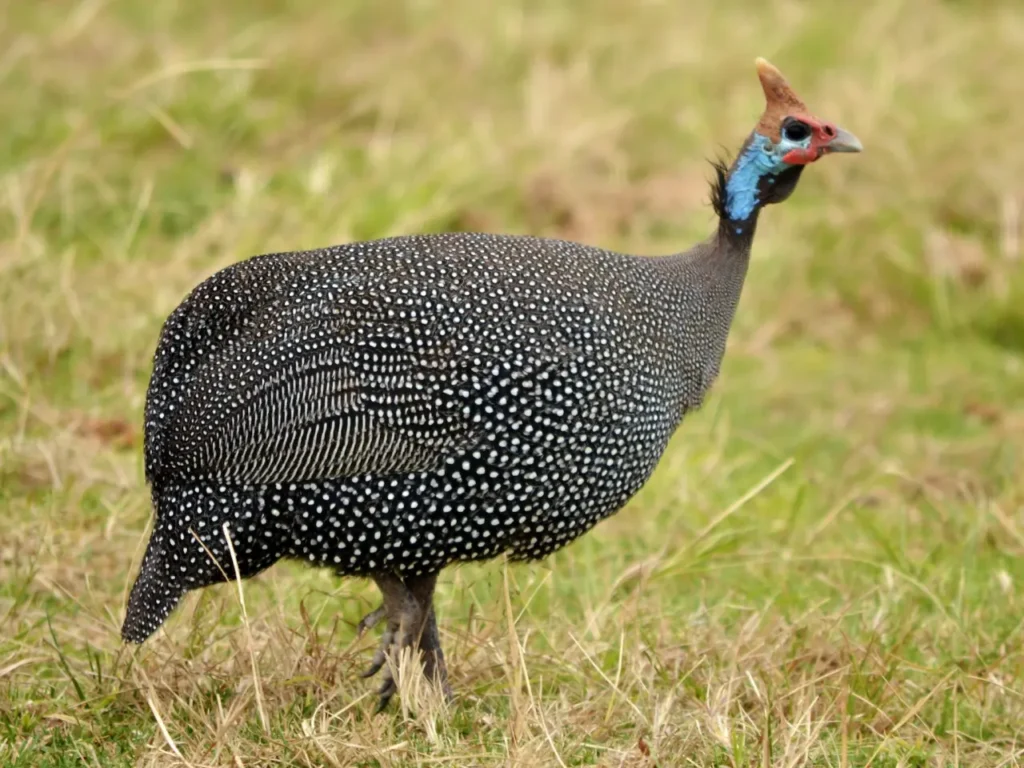
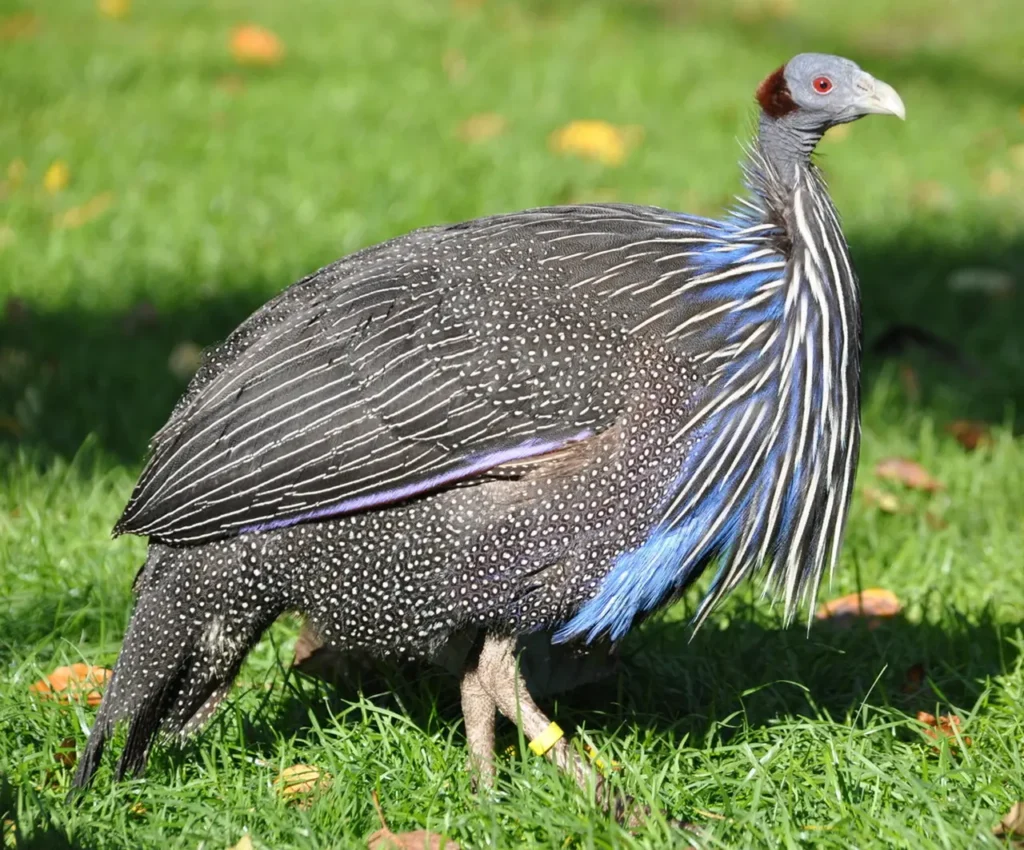
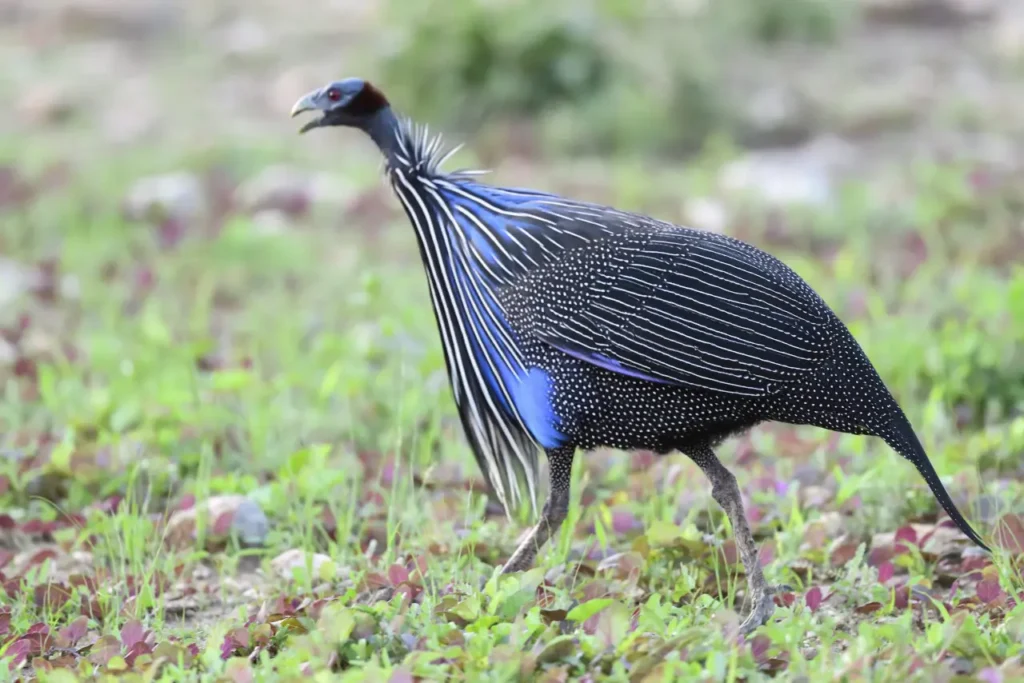
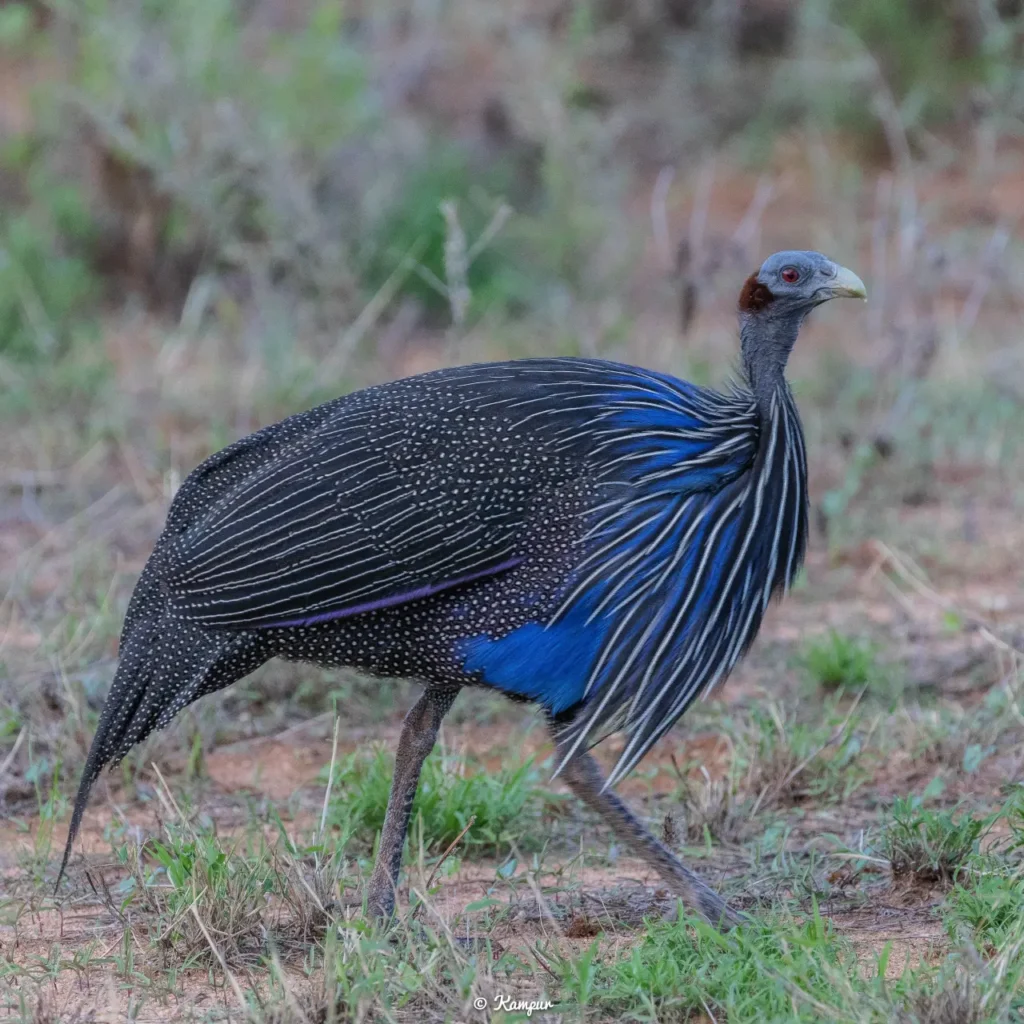
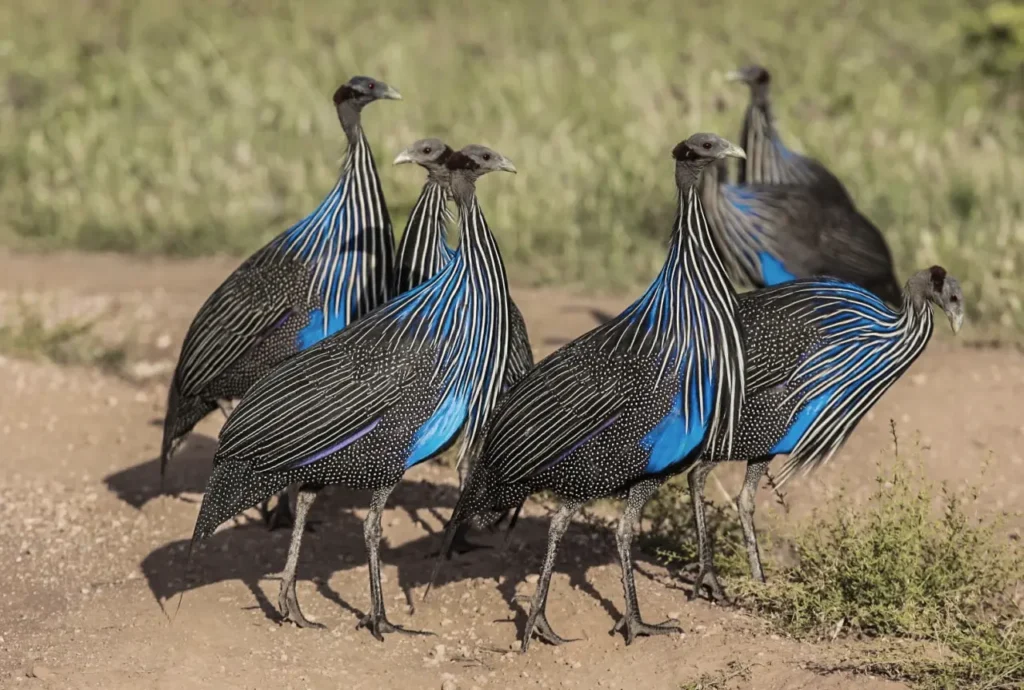
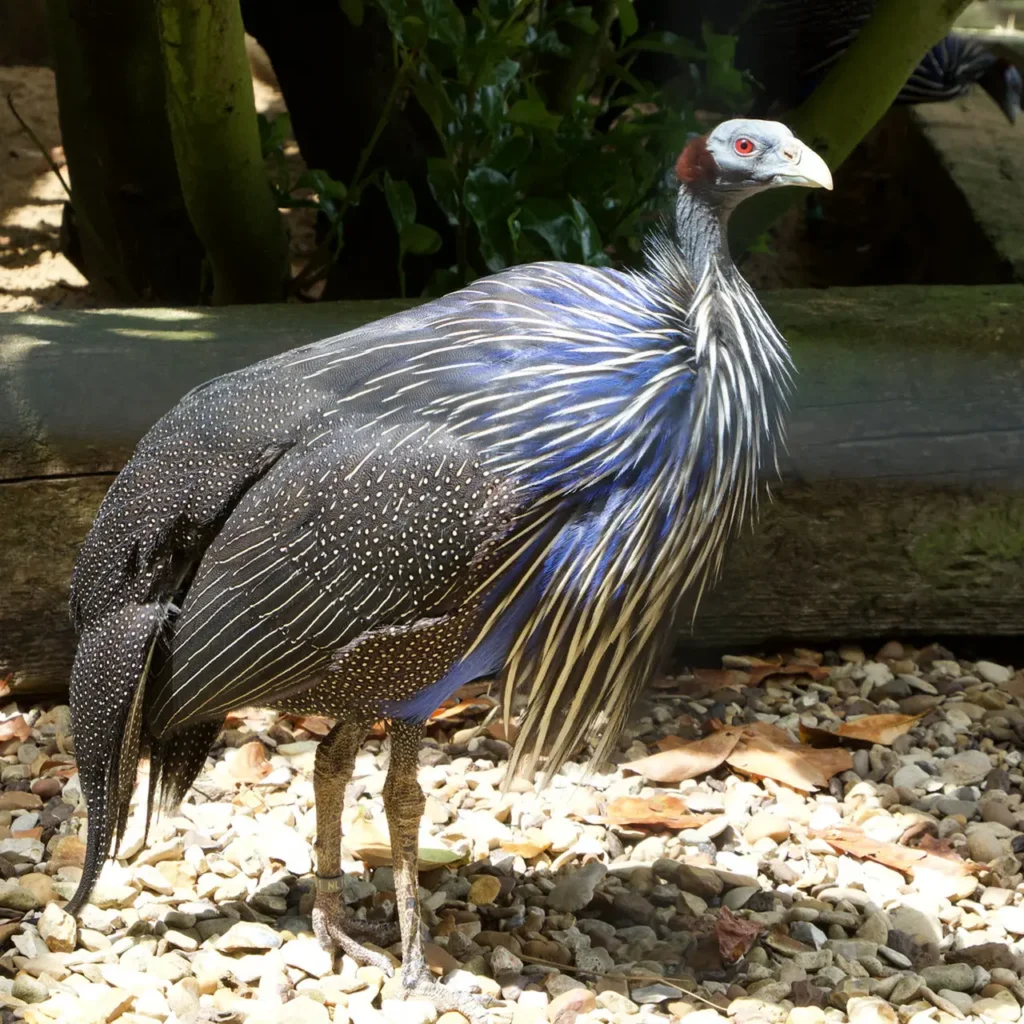
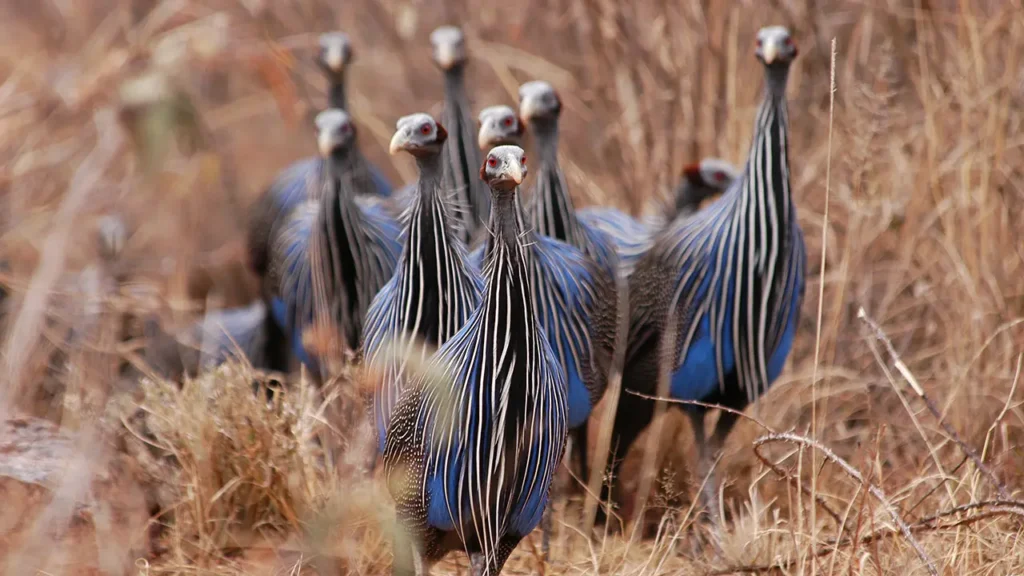
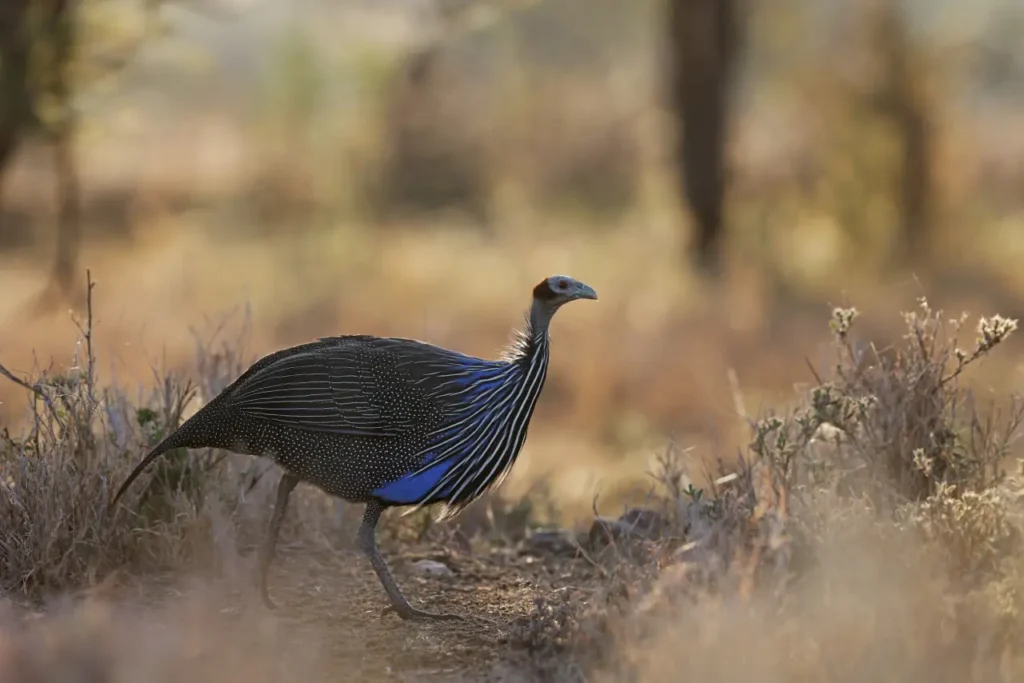
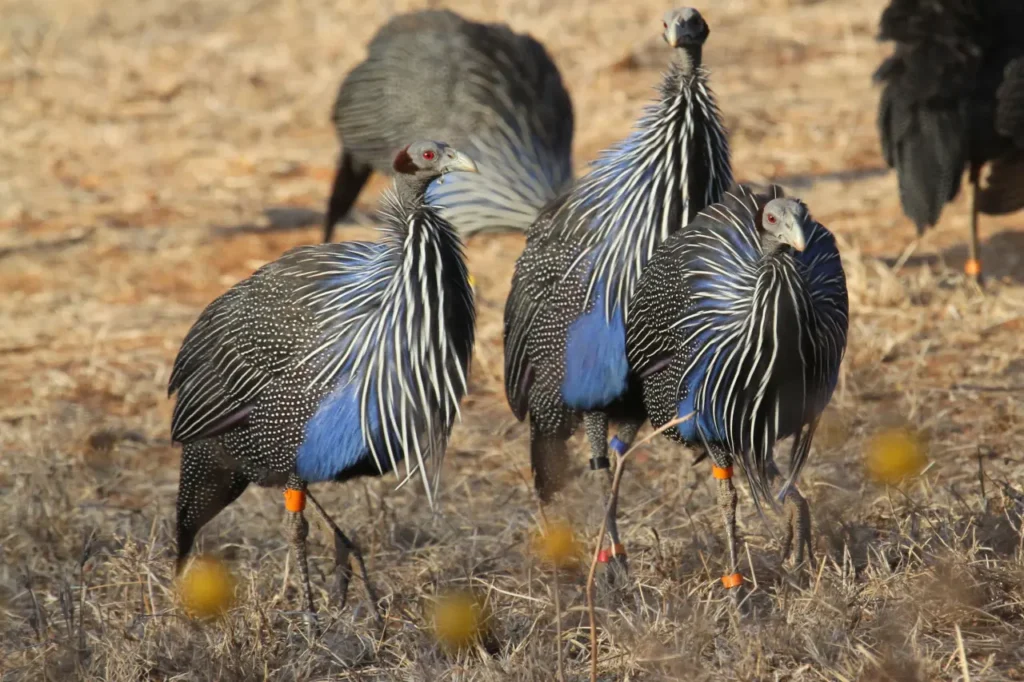
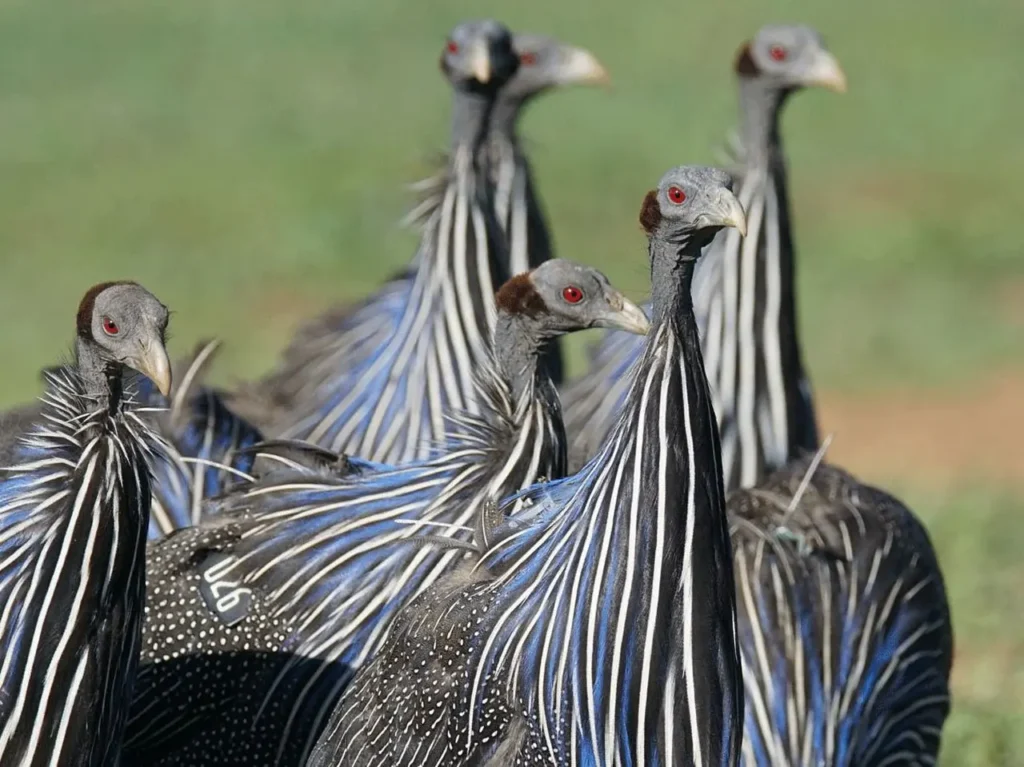
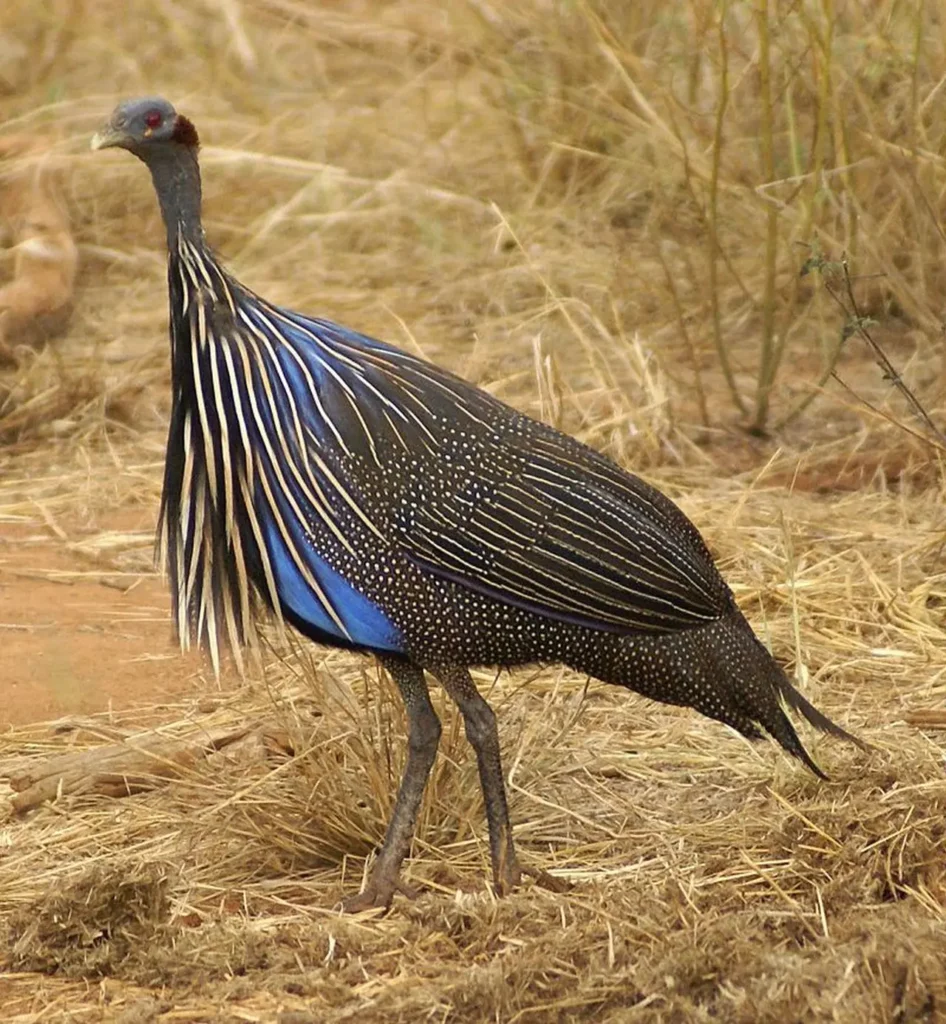
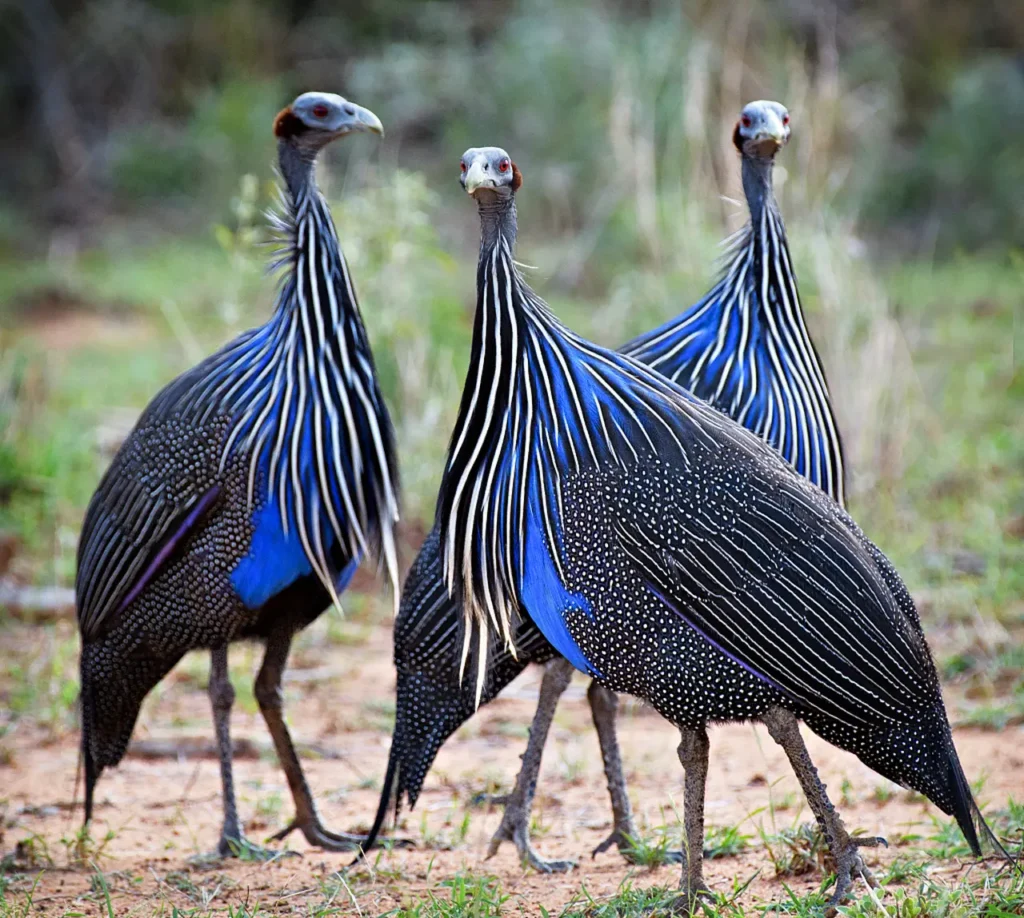
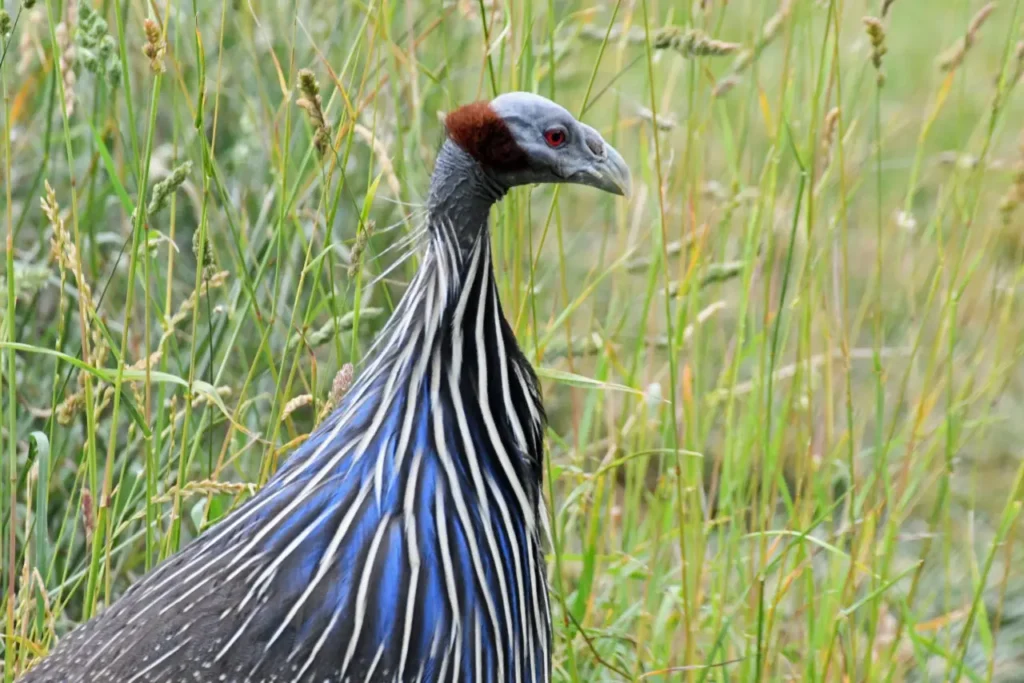
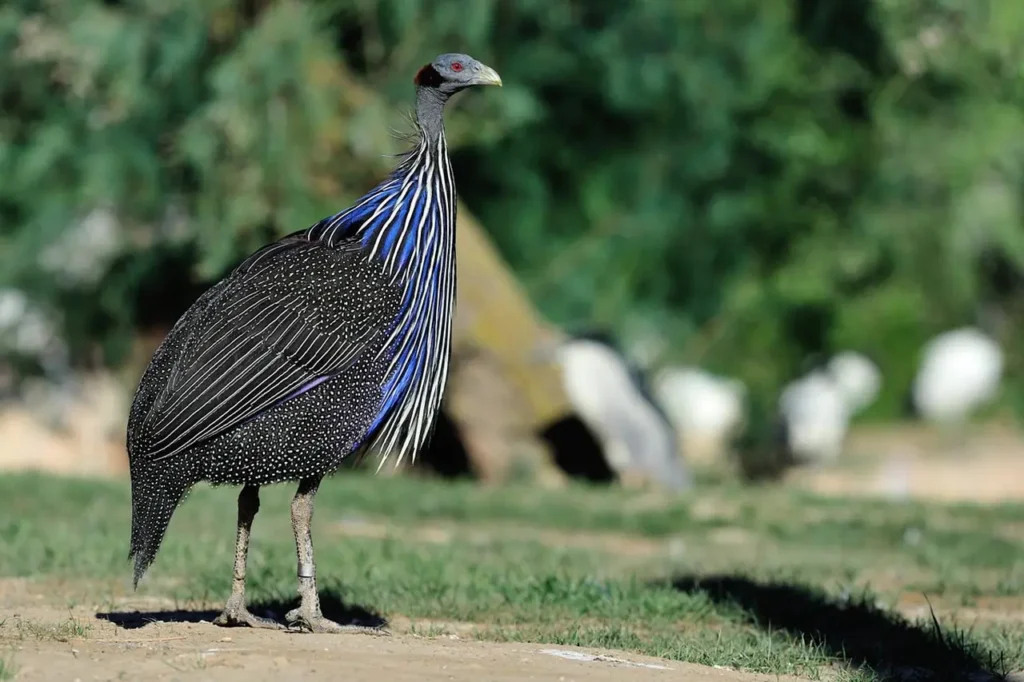
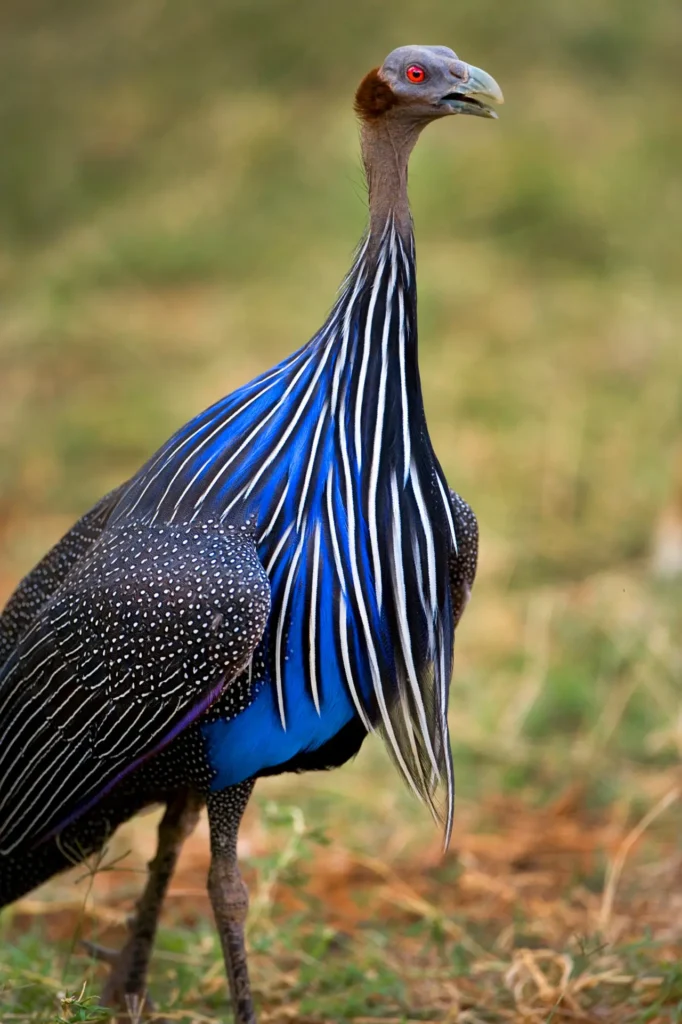
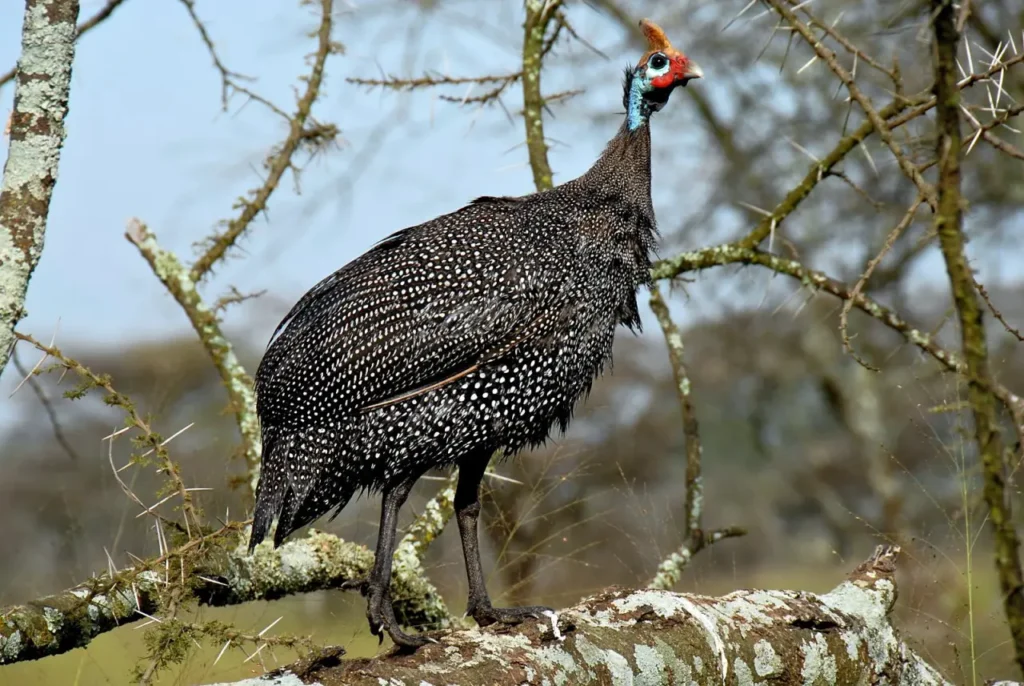
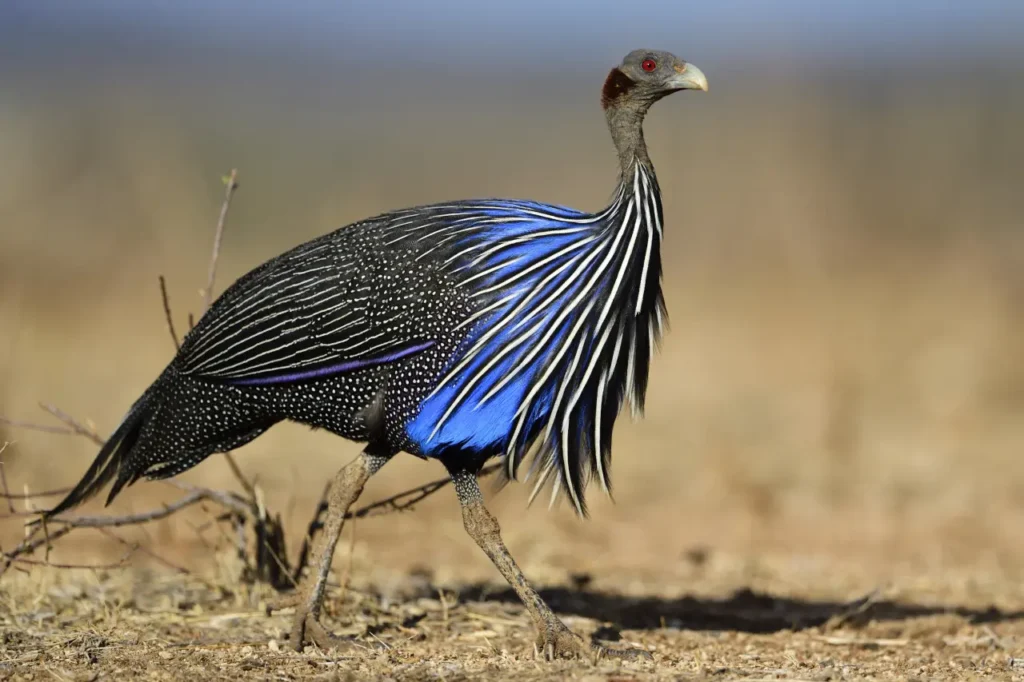
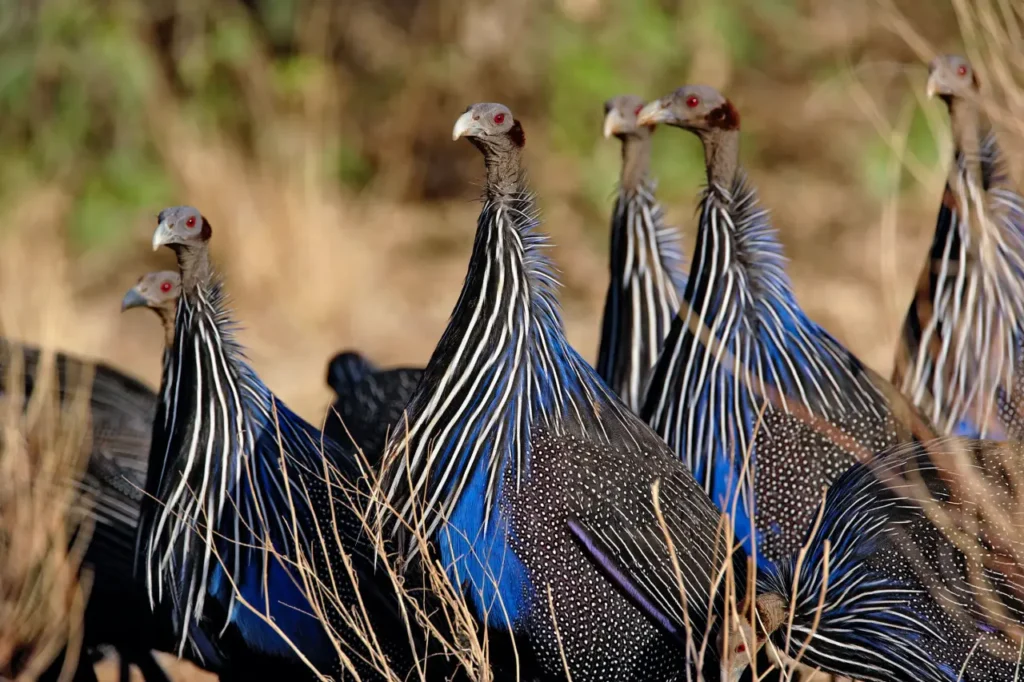
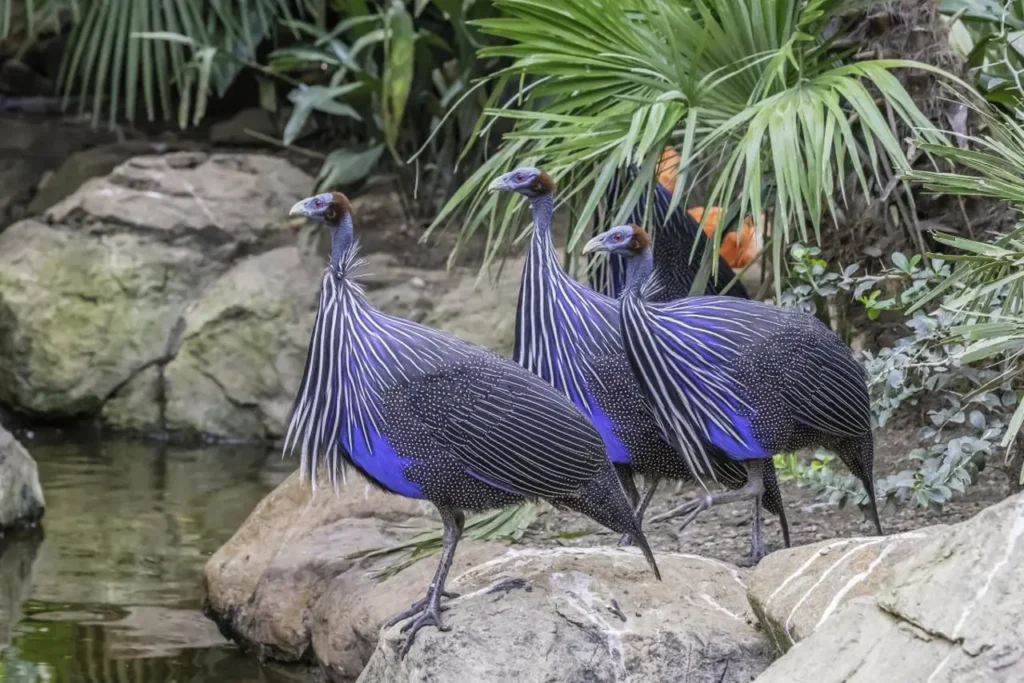
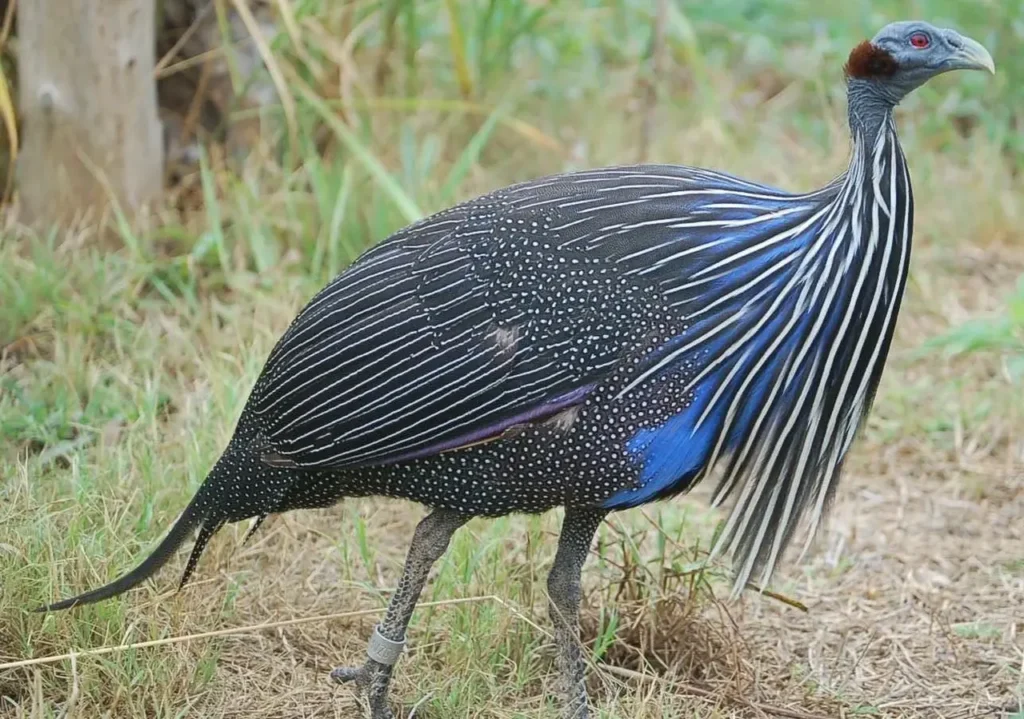
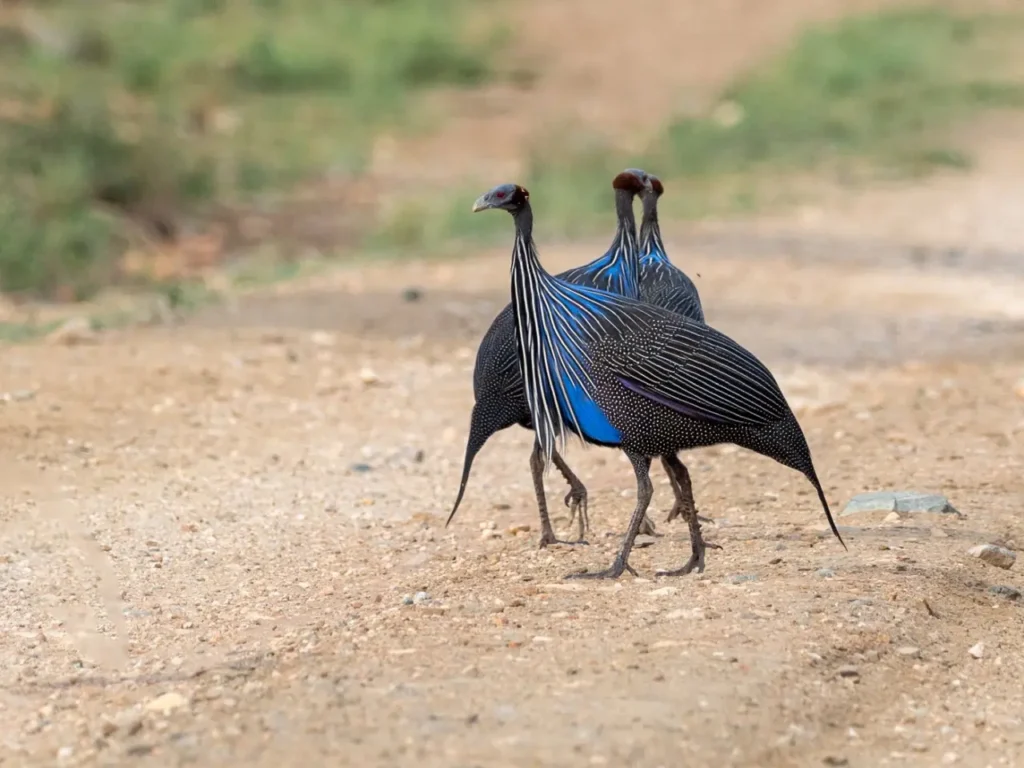
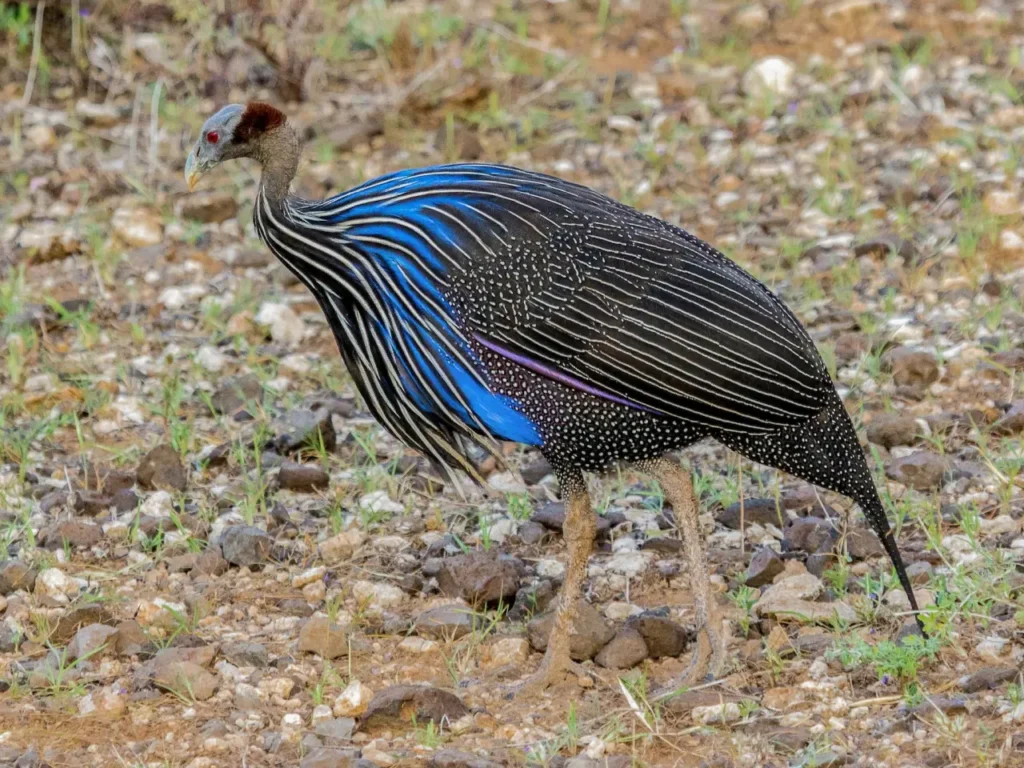
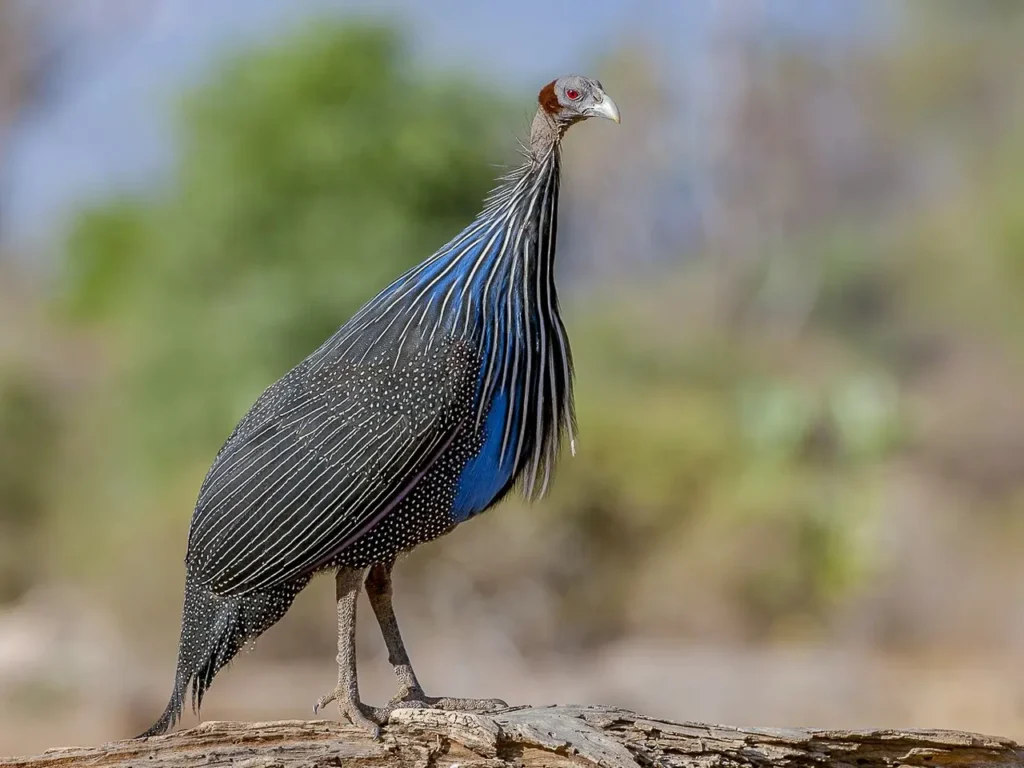
The Vulturine Guineafowl, also known as the Royal Guineafowl, is a large and striking bird that belongs to the guineafowl family. It stands tall with a proud posture, reaching an average height of about 60 centimeters (24 inches) and weighing around 2 kilograms (4.4 pounds). What sets this species apart is its extraordinary plumage, characterized by a combination of iridescent blue and green feathers on its neck and breast, contrasting with a black body and white-spotted wings. Its long, slender neck and small head, adorned with a bright blue crown and a distinctive red and blue wattle, further contribute to its majestic appearance.
Endemic to the grasslands and open habitats of East Africa, including Ethiopia, Kenya, Somalia, and Tanzania, the Vulturine Guineafowl prefers areas with sparse vegetation and access to water sources. It is often found in arid regions, including savannahs, scrublands, and dry woodlands, where it feeds on a diverse diet consisting of seeds, fruits, insects, and small invertebrates. Their long, strong legs enable them to run swiftly on the ground, foraging for food while maintaining a vigilant lookout for potential threats.
One of the most fascinating aspects of the Vulturine Guineafowl is its social behavior. These birds are highly gregarious and form large flocks known as “confusions,” which can consist of up to 25 individuals or more. Within these flocks, they establish a complex social hierarchy, with dominant males and females leading the group. Their communication is marked by a range of vocalizations, including loud calls, cackles, and alarm sounds that serve to coordinate movements and warn others of potential danger.
During the breeding season, male Vulturine Guineafowl engage in elaborate courtship displays to attract females. These displays involve puffing up their chest, spreading their wings, and parading in front of the females while making distinctive calls. Once a pair forms, the female will lay a clutch of about 4 to 8 eggs in a well-hidden nest on the ground, lined with grass and leaves. The eggs are incubated by the female for approximately 24 to 27 days, after which the precocial chicks hatch and quickly develop the ability to follow their parents and forage for food.
The Vulturine Guineafowl holds cultural significance in the regions where it resides. In some African communities, its feathers and other body parts are used in traditional ceremonies and rituals, symbolizing beauty, strength, and abundance. However, like many other species, the Vulturine Guineafowl faces threats to its survival, including habitat loss, hunting, and predation. Conservation efforts focused on protecting its habitats, promoting sustainable land management practices, and raising awareness about its importance in the ecosystem are crucial to ensure its long-term survival.
Encountering a Vulturine Guineafowl in its natural habitat is a truly remarkable experience, allowing us to appreciate the grandeur and unique adaptations of this captivating bird. Its regal appearance and social dynamics remind us of the intricate connections and behaviors found in the natural world. Let us cherish and protect these extraordinary creatures, preserving their habitats and fostering a harmonious coexistence between humans and wildlife.